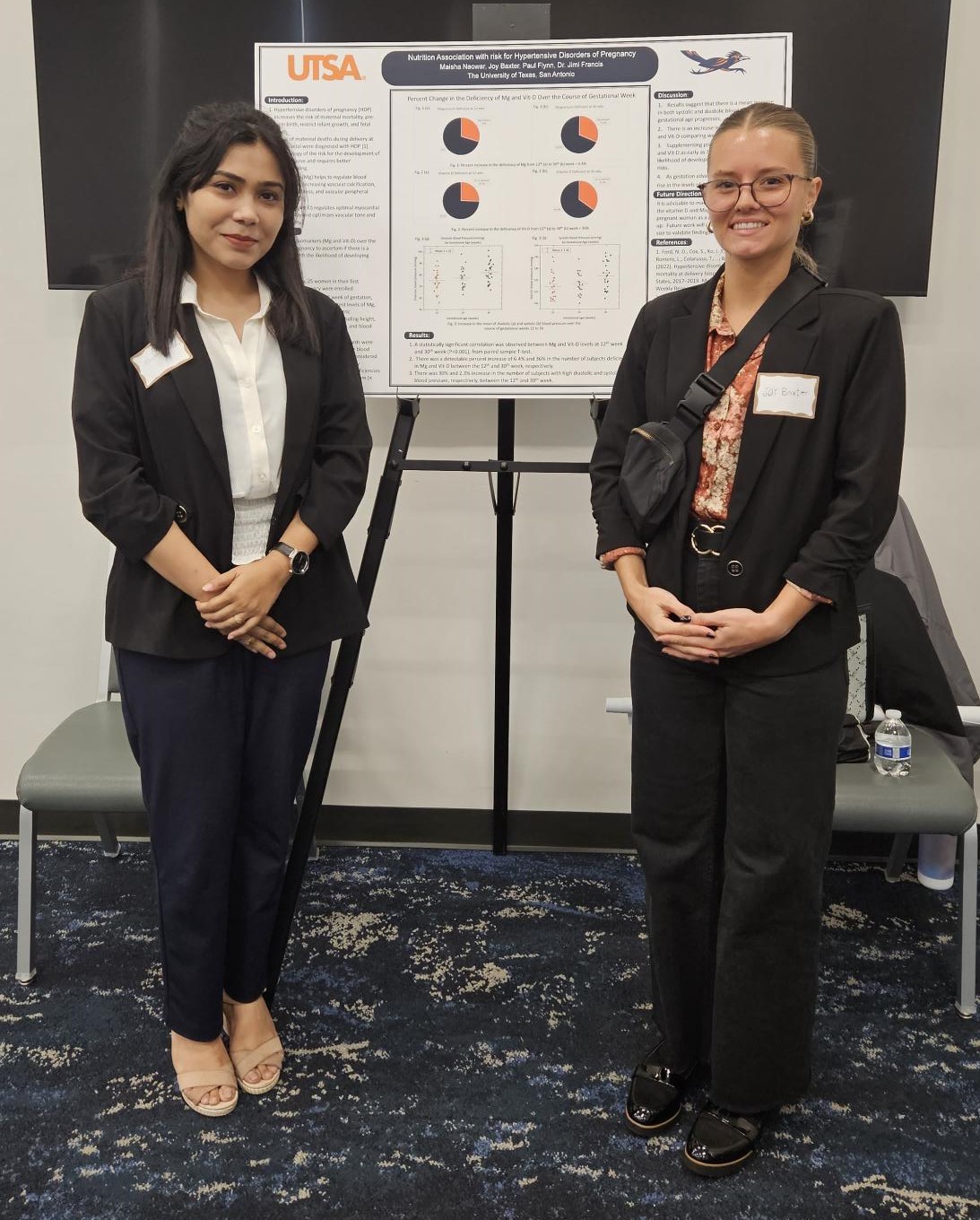The INaP Lab aims to improve the performance and well-being of individuals and families through an integrated nutrition approach across the lifespan.
The lab is directed by Jimi Francis, Ph.D., a Registered Dietitian Nutritionist. She has gained experience in most aspects of the mother/infant dyad through clinical practice and human research. Francis has been particularly interested in maternal/infant health and well-being for many years with a perspective of problem prevention through individualized nutrition. Her team at the UTSA Integrated Nutrition and Physiology (INaP) Laboratory is comprised of nutritionists, engineers, physicians, physiologists, and students well-versed in the issues of maternal/infant health care.
Research Opportunities
Research opportunities may be available to qualified and well-motivated undergraduate and graduate students. The undergraduate students may earn course credits through research opportunities (KIN4913 Independent Study, KIN4933 Practicum in Kinesiology Research, or KIN4936 Kinesiology Internship). The master’s students may work on a thesis project under the direction of Dr. Francis. Dr. Francis conducts a bi-weekly journal club. Joining the journal club is a great way for students to get involved in research.
Please contact Dr. Francis for more information.
 Laboratory Equipment
Laboratory Equipment
The Integrated Nutrition and Performance Laboratory is equipped with equipment to conduct research with human participants and on biological samples.
The INaP Lab has 600 square feet of combined clinical/lab space comfortable for participants with a connected “wet” bench space for the biochemical endeavors of research. The lab is conveniently located on the ground floor of the Applied Engineering and Technology Building, close to the parking lot and entry ramp making it easy for new mothers with infants (and occasionally a toddler in tow) to enter our facility. The “clinical” INaP lab is equipped with a Tanita Infant scale, a Tanita Body Analyzer, an infant length board, and a data acquisition unit equipped for data acquisition using multiple biosensors simultaneously, as well as other instrumentation for collecting anthropometric data. The “wet” INaP lab is equipped with basic laboratory equipment (a refrigerator, freezer, autoclave, incubator, a back-flow hood, vortex, centrifuge, balance scale, glassware, etc.), a SpectraMax ID 5 plate multi-user microplate reader with a large touchscreen, near-field communication (NFC) functionality for access to custom protocols, enhanced touchscreen workflows for walk-up usability, an ultra-cooled photomultiplier tube (PMT) detector for background noise reduction with a QuickSync feature that pushes data to any computer within the same network. We also have a MIRIS human milk analyzer system.

